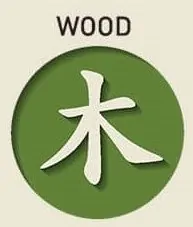The Wood Element in Chinese Philosophy
In traditional Chinese philosophy, the concept of the five elements – Wood, Fire, Earth, Metal, and Water – plays a fundamental role in understanding the natural world, human personality traits, and the interplay between various phenomena. Among these elements, Wood holds a special significance, symbolizing growth, vitality, and renewal. Let’s delve deeper into the profound symbolism and significance of the Wood element in Chinese philosophy.
Understanding the Symbolism of Wood
Wood represents the beginning of life, embodying the energy of growth, expansion, and creativity. Just as a seed sprouts from the earth and grows into a mighty tree, Wood symbolizes the potential for development and progress in all aspects of life. In Chinese cosmology, Wood is associated with the east, the direction of the sunrise and new beginnings, further emphasizing its connection to growth and renewal.
Characteristics of the Wood Element
In Chinese elemental theory, each element is associated with specific personality traits and attributes. Individuals born under the influence of the Wood element are often characterized as ambitious, visionary, and adaptable. They possess the resilience to overcome obstacles and the flexibility to navigate changing circumstances, much like the branches of a tree swaying in the wind.
Wood individuals are known for their strong sense of purpose and determination. Like the roots of a tree firmly planted in the earth, they exhibit stability and perseverance in pursuing their goals. However, they also possess the capacity for innovation and creativity, branching out in new directions to explore untapped potentials and possibilities.

The Interplay of Wood with Other Elements
In the five-element system, each element interacts with the others in dynamic ways, shaping the flow of energy and influencing various aspects of life. Wood interacts positively with Water, as water nourishes wood, facilitating growth and expansion. Similarly, Wood fuels Fire, providing the fuel needed for combustion and transformation.
However, Wood can also exert a controlling influence on Earth, as the roots of trees stabilize the soil and prevent erosion. Conversely, Wood is restrained by Metal, as metal axes can cut down trees, symbolizing the limits and boundaries that temper excessive growth and expansion.
Applications in Traditional Chinese Medicine
The concept of the five elements extends beyond philosophical and metaphysical realms to practical applications, including Traditional Chinese Medicine (TCM). In TCM, the Wood element corresponds to the liver and gallbladder meridians, which regulate the smooth flow of qi (life force energy) throughout the body.
Imbalances in the Wood element can manifest as physical symptoms such as headaches, digestive issues, or emotional disturbances like anger and frustration. Practitioners of TCM utilize various techniques, including acupuncture, herbal medicine, and dietary therapy, to restore harmony and balance to the Wood element and the body as a whole.
Cultural and Symbolic Significance
Beyond its philosophical and metaphysical implications, Wood holds profound cultural and symbolic significance in Chinese culture. The ancient art of woodworking, for example, reflects the mastery of craftsmen in shaping and transforming natural materials into functional and artistic creations.
Moreover, Wood is associated with concepts of renewal and regeneration, as seen in traditional Chinese festivals like the Spring Festival (Chinese New Year), where people decorate their homes with branches of blossoming plum or peach trees to usher in prosperity and good fortune for the coming year.
Conclusion
In summary, the Wood element occupies a central place in Chinese philosophy, symbolizing growth, vitality, and renewal. Its profound symbolism extends to various aspects of life, from personality traits and interpersonal relationships to health and well-being. By understanding the attributes and characteristics of the Wood element, we can gain insights into the natural cycles of growth and transformation, fostering harmony and balance in our lives and the world around us.